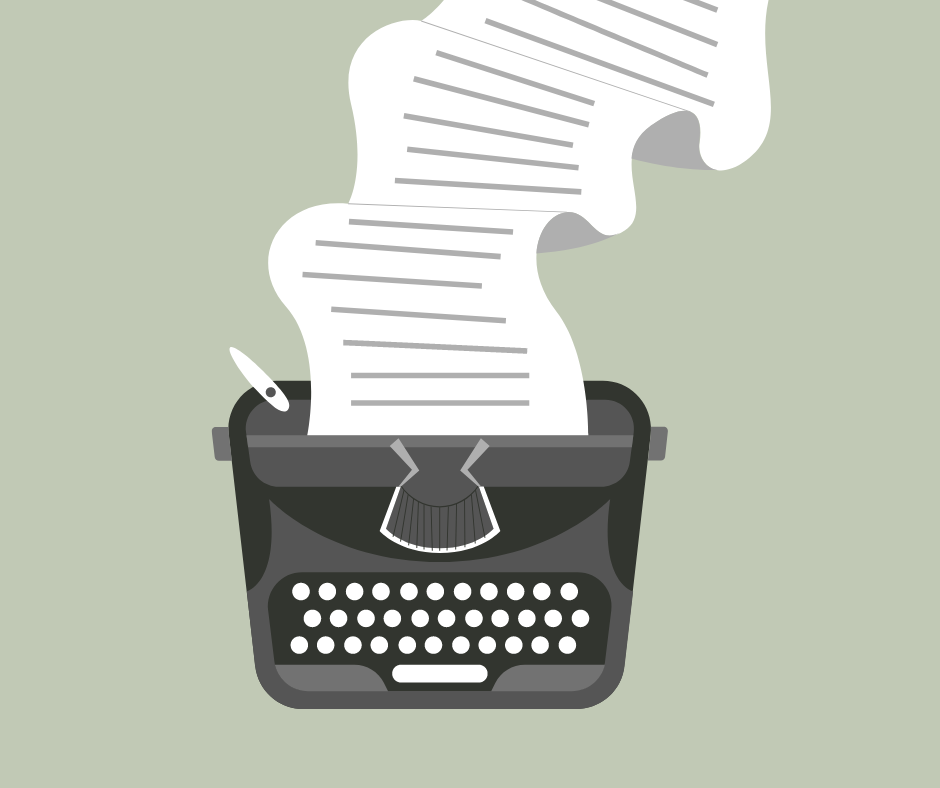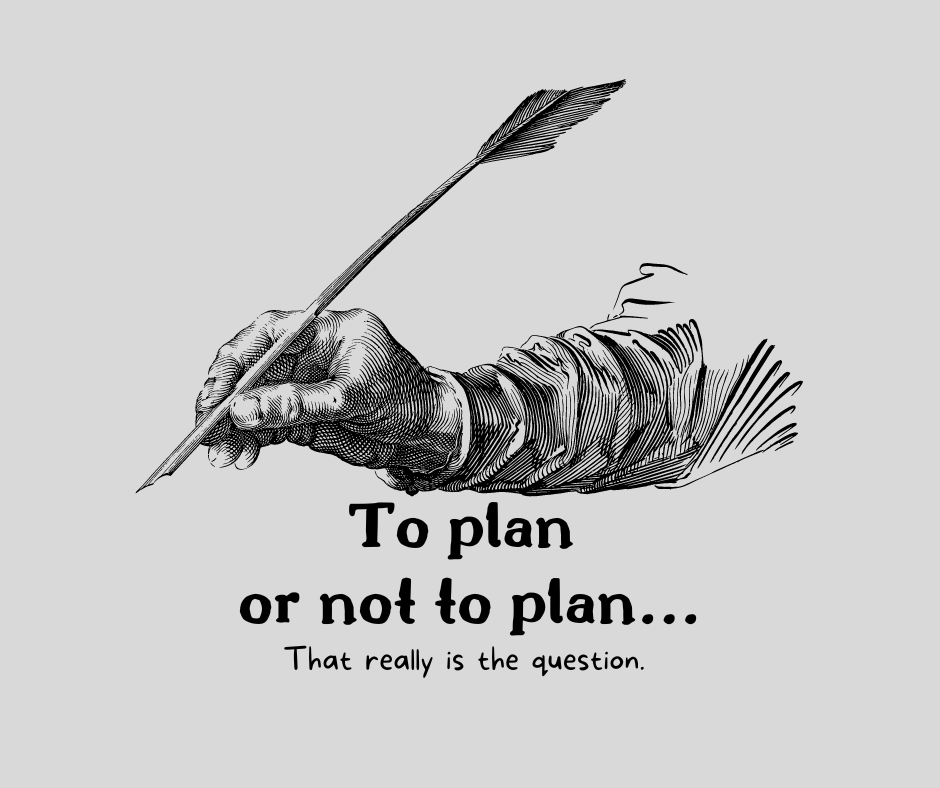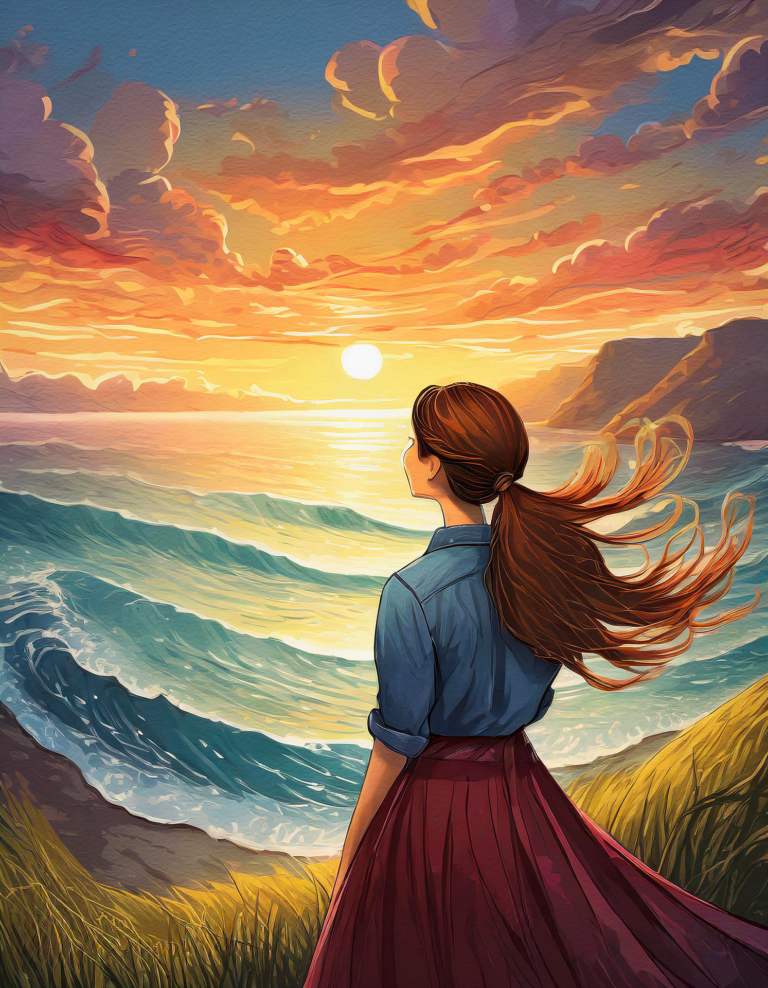
Planning/plotting/outlining these are methods some writers adopt before they begin to write.
Other writers just go for it with nothing but a general idea in their head of what they want their story to be.
Neither way is wrong.
Whatever method a writer (you!) uses that helps them finish their story is the best method.
Some writers are plotters.
Have you ever looked at the outline that J.K. Rowling wrote for her Harry Potter series? (Google it. It’s humbling.)
You can imagine the details that she needed to keep track of for those books!
Neil Gaiman (Coraline, The Graveyard Book, etc.) said that he prefers to divide writers into gardeners or architects rather than plotters or pantsers (writers who don’t outline or plot their books).
An architect plans every detail, while a gardener will drop a seed and see what grows.
Gaiman has said that he’s a gardener.
I’ve read some interviews with Kate DiCamillo (Because of Winn Dixie, Tale of Despereaux, etc.) that lead me to think she is a pantser.
She has said that she likes it when her characters act on their own, otherwise “there’s no life on the page.” (Shaw, Mary Liz. “Q and A with Author Kate DiCamillo.” Milwaukee Journal Sentinel, April 14, 2012.)
She also mentioned that she often uses the time while she’s walking her dog to work out plot points.
The idea of just going for it and writing a story is so intriguing, especially when you’re really excited about the project.
Just follow the characters and see what magic happens on the page!
That versus the awful outlining process we all learned in 11th grade English with the Roman numerals, capital letters, lowercase letters.
Ugh.
That gives me the willies. (More on this in a minute. Outlines don’t have to be like this!)

I have tried writing a novel with just a general idea of what I wanted to say.
By the time I finished” it, I couldn’t remember what my original point was.
But there was a new point.
So, I had to go back and make sure all my scenes led up to this new point.
Then I’d get other ideas and insert them in my scenes.
So, once again, I’d have to go back and make sure everything worked as a cohesive story.
It took me forever.
In fact, I’m still tinkering with it.
It’s beginning to remind me of Frankenstein’s monster—pieces all stitched together to try to form a whole entity.
With a more recent novel I wrote, I planned each major scene.
That book was so much easier to work with because I knew what each scene would be, who would be in it, where it needed to lead, and how it fit in the overall story scheme.
It didn’t restrict the characters from veering off the path.
It didn’t inhibit my creativity.
In fact, it helped me be more creative because I didn’t have to think if my story was on the right track.
I knew it was, so I could let the characters roam a bit.
Sometimes, they roamed in a better direction than I had originally planned.
So, yes, then I had to rework some of my chapters and scenes.
But that was SO MUCH EASIER than getting to the end and realizing lots of things were out of place and didn’t make sense.
But I certainly didn’t use the high school English outline.
What’s the best way to outline or plan a novel?
You know, of course, that there is not a single best way.
Sorry. But there just isn’t.
Try Googling how to plot a novel.
Here are some things I find helpful.
Before I start to write, at the minimum I like to know what kind of person the main character is and what they want more than anything, as well as what happens if they don’t get it, who the secondary characters are, what the theme is, what the general arc of the main character is going to be, what the inciting incident is, and what each scene needs to include in order to get me to the end I envision.
At the end of this planning, I am able to complete this ultra simple “Mad Lib” sentence: Character wants Goal or else This awful thing will happen.
I also need to know approximately how many words are going to be in my story.
Each genre has a word count range.
For example, for middle grade, the average word count of a published novel is between 25,000 and 50,000.
A middle grade fantasy novel can run longer.
Charlotte’s Web was about 32,000 words.
The Harry Potter books had word counts between 77,000 and 190,000!
But that’s way more than most writers can get away with.
General adult fiction is between 75,000 and 100,000 words.
Once you know the word count, you can break down the plot structure.
It goes something like this:
By the 10% mark, you need to have shown what your main character’s life is like and what they want instead.
By the 15% mark, you need to show the inciting incident that makes your character bound and determined to get “X” (goal) or something terrible will happen (the stakes).
Between 20% and 30% is the first plot point.
The problem with getting the goal “X” is presented here.
The main character is determined to go after “X.”
The middle is right where you’d expect it, at 45%-55%.
It’s often called the murky middle because it can be where the reader gets bored…as well as the writer.
So, it’s important to raise the stakes on the main character’s goal.
For example, not only will this one bad thing happen, but this other even worse thing will happen if they don’t accomplish the goal.
Plot point two is at 70%-80%.
This is make it or break it time.
If the main character doesn’t step up their game, they’re going to lose everything.
This is a dip for the main character, a low point.
What they have done up to this point has caused even more problems, and now they are more determined than ever to get “X.”
The climax is at 85%-95%.
This is where your main character faces the greatest conflict.
If they don’t overcome this obstacle, it’s all over for them.
This is where everything the main character has learned up to this point about themselves or about life or about the problem comes into play.
No matter what kind of help they have had so far, now it all comes down to their own wits/smarts/bravery/action.
The resolution is no more than the last 10% of the story.
This is where everything gets tied up.
In a middle grade book, the main character has solved the problem/accomplished the goal.
But it doesn’t need to look like they imagined at the outset.
It can be better than or maybe not as great as hoped, but life is different from their life at the beginning, and the main character has changed.
Here is where the reader gets a glimpse or a hint of what the main character’s life is going to look like from now on.
In middle grade novels, it’s important to leave the reader with some hope for the world and the main character.
And isn’t that a good way to end anything—a conversation, a hike, a day, a week, a meal, a cup of coffee?
Hope for the world and yourself!
Take a look at some of your favorite books and see how closely they fall within these percentages.
Then, either garden or build your own story.
A great book to help you on that path is Save the Cat Writes a Novel by Jessica Brody.
It’s a classic.
Another good one is Blueprint for a Book by Jennie Nash.
Have a fun week,
~Gail
Before you go, don’t forget to sign up for my mailing list, below:






I’m a mix of a plotter and pantser. A plantser. Lately, I’ve been trying to do outlines, which I end up following to a point…before a character decides to take me a different direction. Nice post!
Hi Beth. Thanks for visiting. I agree with you completely about outlines. It’s nice though when YOU know where you want to go and the characters jump in with ideas to help you. Then you can either listen or make them behave. 🙂 What do you write?